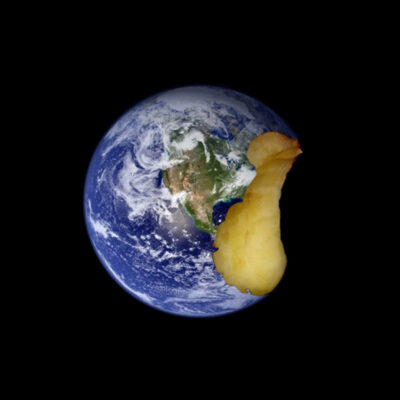Earth Overshoot Day il 2 agosto già finite le risorse della terra per il 2017


Earth Overshoot Day, il 2 agosto già finite le risorse della Terra per il 2017.
Quest’anno l’Earth Overshoot Day, il giorno in cui la popolazione mondiale ha consumato tutte le risorse terrestri disponibili per il 2017, sarà già il 2 agosto. Da mercoledì il pianeta sarà sovrasfruttato dall’uomo, a seguito di un tasso di consumo 1,7 volte più veloce della capacità naturale degli ecosistemi di rigenerarsi. Lo evidenzia il calcolo dell’organizzazione di ricerca internazionale Global Footprint Network.
L’uomo si rivela, anno dopo anno, sempre più “vorace” e le risorse naturali, quelle che la Terra è in grado di rigenerare da sola, si esauriscono sempre prima. Lo dimostra il fatto che ogni anno questa giornata ricorre sempre prima a causa dell’aumento dei consumi mondiali di natura che comprendono frutta e verdura, carne e pesce, acqua e legno. L’anno scorso era stata celebrata l’8 agosto, due anni fa il 13 agosto, nel 2000 a fine settembre.
Invertire la tendenza, secondo gli attivisti, è possibile e lanciano la campagna #movethedate, per cercare di posticipare l’Overshoot Day. Se riuscissimo a spostare in avanti questa data di 4,5 giorni ogni anno, spiegano, ritorneremmo “in pari” con l’uso di risorse naturali entro il 2050. Ognuno può contribuire con piccole azioni ma servono soluzioni “sistemiche”, dice l’organizzazione: se ad esempio l’umanità dimezzasse le emissioni di anidride carbonica, l’Overshoot Day si sposterebbe in avanti di quasi tre mesi.
Cities:
as our recent report on the Mediterranean region showed. This trend will continue, as 70% to 80% of all people is expected to live in urban areas by 2050.
Consequently, smart city planning and urban development strategies are instrumental to make sure there is enough natural capital and to avoid excessive human demand that would erode it. Examples include energy-efficient buildings, integrated zoning, compact cities, and effective options for people-powered and public transportation.
UN Sustainable Development Goal 11 Sustainable Cities and Communities features several 2030 targets, including:
reduce the adverse per capita environmental impact of cities. provide access to safe, affordable, accessible and sustainable transport systems for all, notably by expanding public transport. enhance inclusive and sustainable urbanization and capacity for participatory, integrated and sustainable human settlement planning and management in all countries.
Energy:
Not only is decarbonizing the economy our best possible chance to address climate change, but it would also improve the balance between our Ecological Footprint and the planet’s renewable natural resources.
Per the 2015 Paris Accord on Climate, capping the global temperature rise at below 2°C (or even 1.5°C) implies keeping CO2e- atmospheric concentration below 450 parts per million (ppm). In 2017, the atmosphere contained 409 ppm CO2. The current carbon Footprint adds 2 to 3 ppm of CO2 to the atmosphere per year. This means that all of us need to phase out fossil fuels way before 2050, if we want to live up to the Paris agreement.
UN Sustainable Development Goal 7 Affordable and Clean Energy calls for substantially increasing the share of renewable energy in the global energy mix by 2030. Reducing the carbon component of humanity’s Ecological Footprint by 50% would get us from consuming the resources of 1.7 Earths down to 1.2 Earths. This corresponds to moving the date of Overshoot Day by 89 days, or about three months.
Food:
- Resource inefficiency in food production:
Animal calories are significantly more resource intensive than plant calories to produce. In fact, China’s government is committed to reducing meat consumption by 50% by 2030. This would reduce the Ecological Footprint by more than 126 million global hectares and move the date of Overshoot Day back 1.5 days (according to China’s current Ecological Footprint figures).
- Food waste:
About one third of the food produced in the world for human consumption — 1.3 billion tonnes every year — gets lost or wasted, with high and low-income countries dissipating roughly the same quantities of food, according to the UN Food and Agriculture Organisation. That’s equivalent to 9% of humanity’s Ecological Footprint.
In the United States, an estimated 40% of the food goes to waste. That’s the equivalent of the total Ecological Footprint of Peru and Belgium combined, or the total biocapacity of Mexico.
One target of UN Sustainable Development Goal 12 Sustainable Consumption and Production is to halve per capita global food waste at the retail and consumer levels and reduce food losses along production and supply chains, including post-harvest losses, by 2030. If we cut food waste in half worldwide, we would move Overshoot Day by 11 days.
